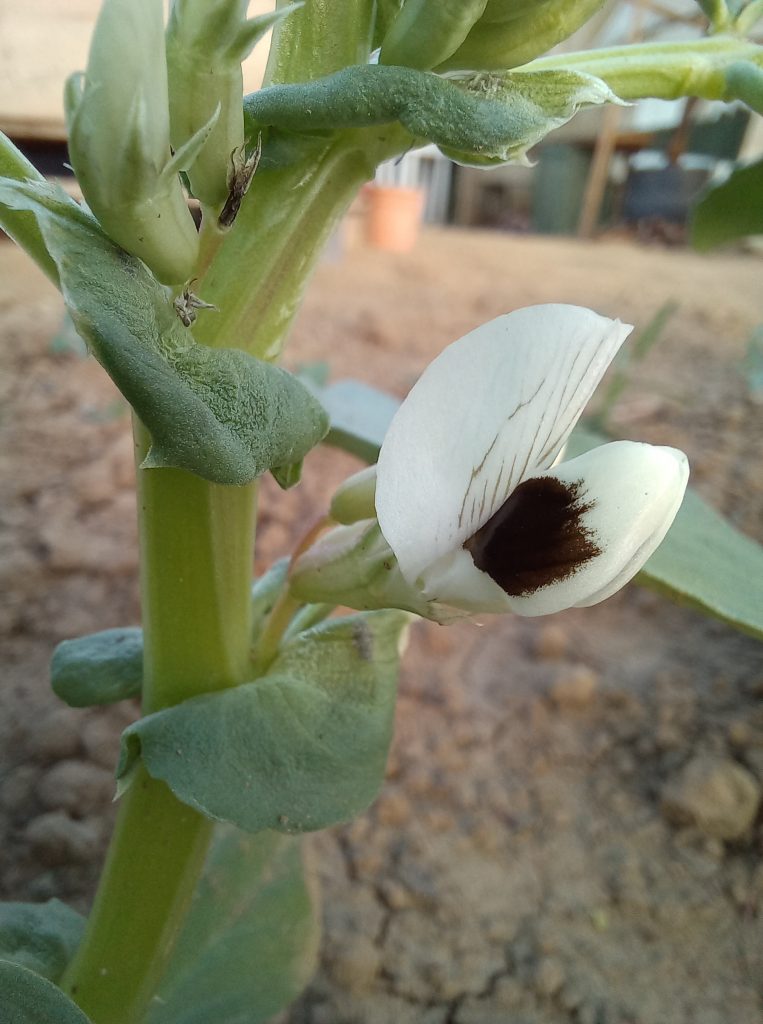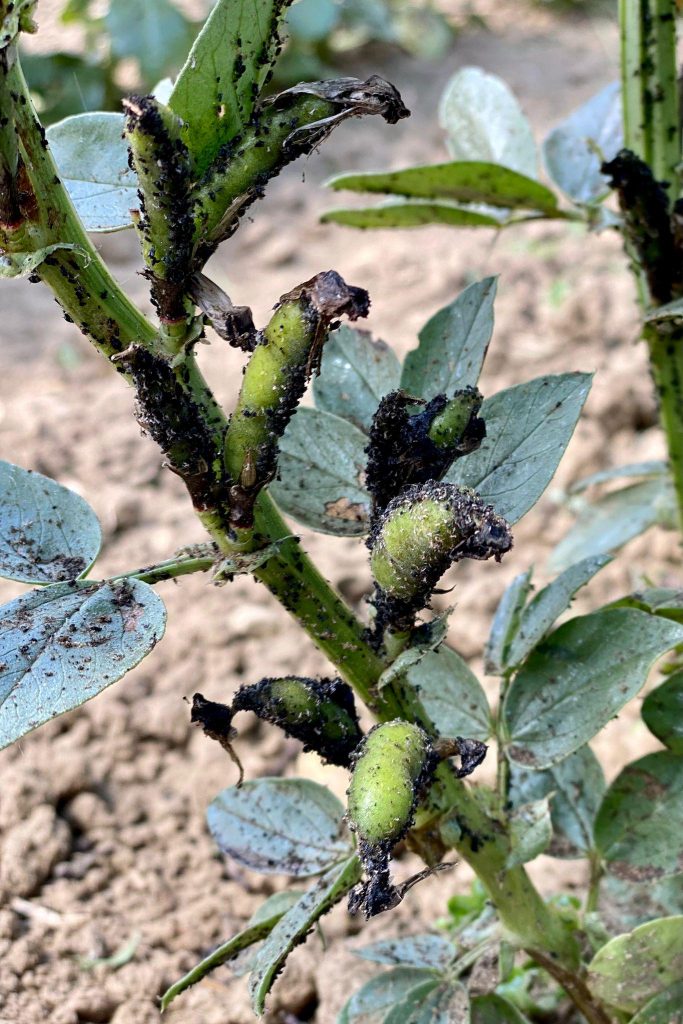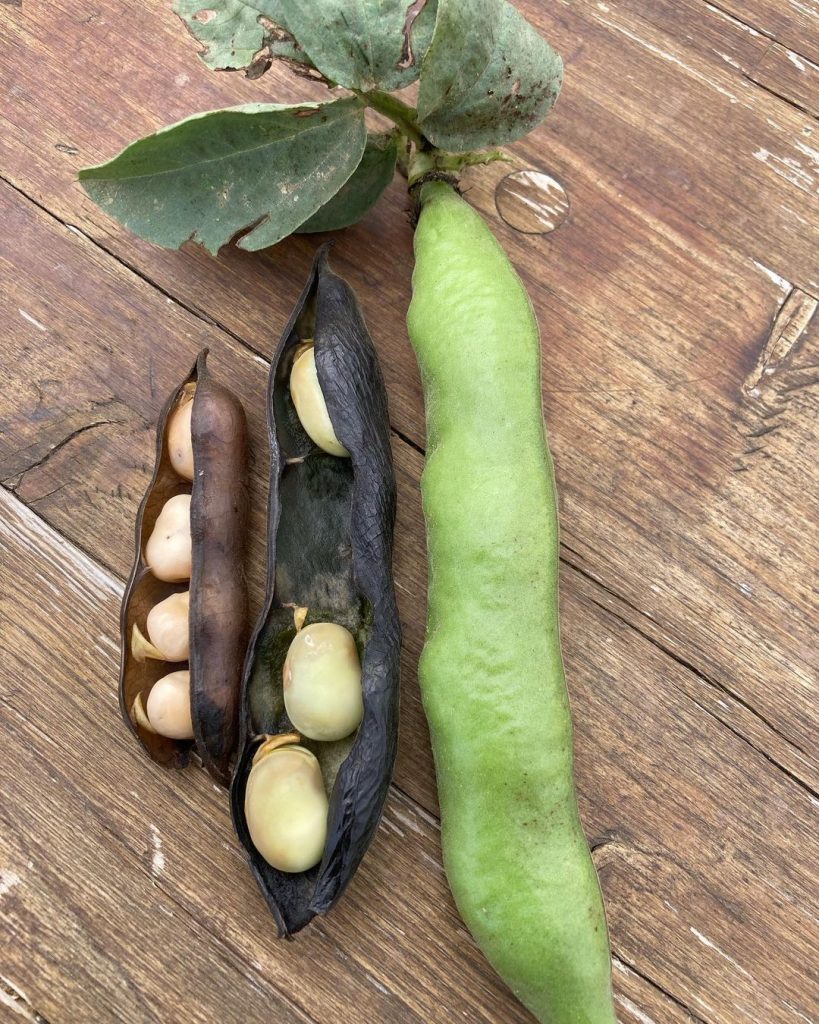Author: Yana Stiewe (Global Plot Berlin) Based on the research on Winter legume crops of Magdalena Aigner (Arche Noah)
Taking a walk during wintertime shows us that the world is asleep. Grey skies, leafless trees and bare soil, nothing covering the ground. The latter is actually nothing nature intends to do but rather anthropogenic interference. Usually the soil gets covered naturally during the cold period of the year, for good reasons. Depending on the region, wind, rain, cold, snow and frost can cause damage to the top layer of the soil. It runs the risk of losing nutrients, structure and at worst erodes.
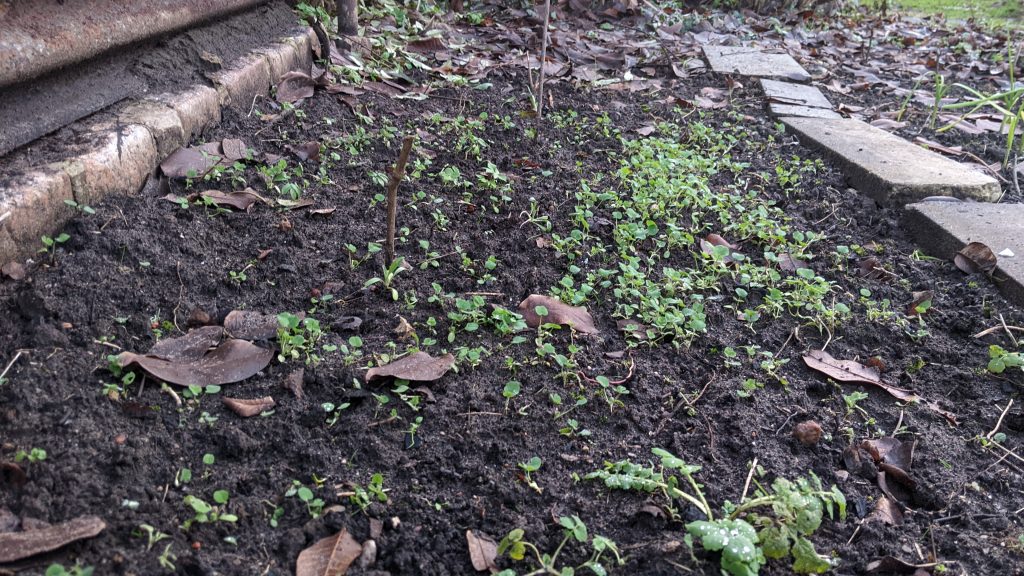
The win-win strategy with winter grain legumes
To prevent degradation, it is important to protect the soil that has been tilled during the year. This can be done by mulching or putting cardboard, but a win-win strategy, when striving for healthy soil, is to broadcast winter grain legumes (WGL). They cover the soil, fix nitrogen and protect the network of microorganisms during winter. Additionally WGL can be mixed with other hardy plant families like brassica or winter cereals. Here is an introduction to four types of WGL as well as some tips about winter cropping and one opportunity to start soon in January.
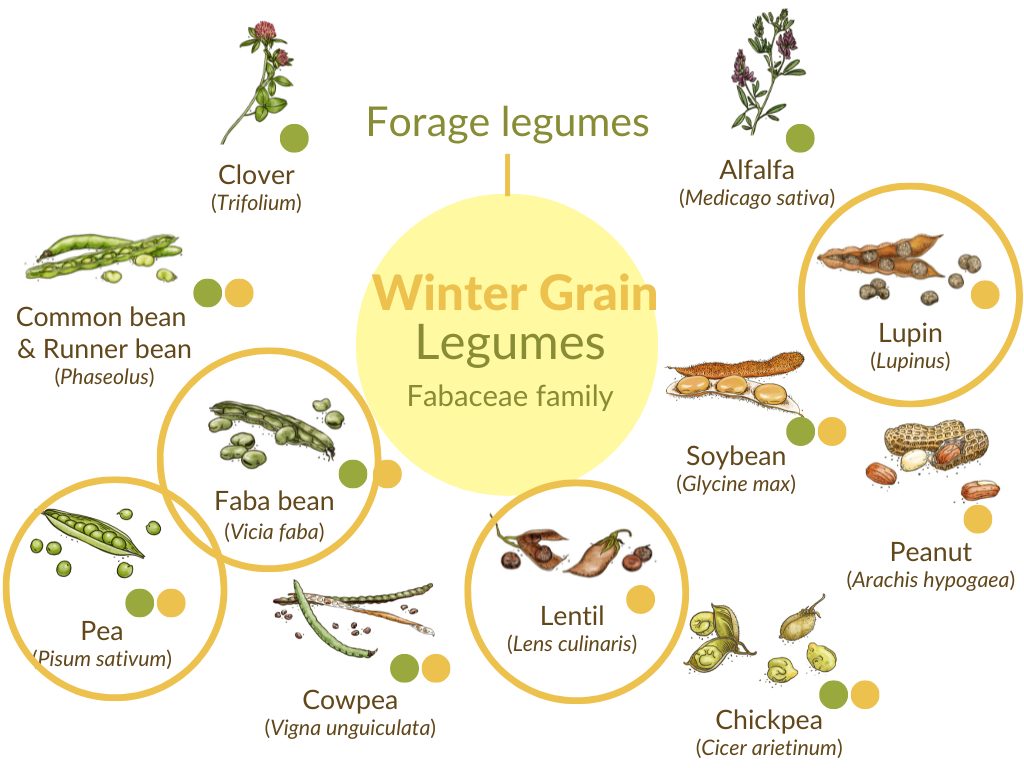
Pea, lentil, lupin and fava bean varieties that survive frosts and are sown before the winter are considered WGL. The best time to broadcast them is autumn, when the hot days are over. All of them can be planted in spring but in this article the focus is on winter-tolerant varieties. When choosing a WGL for your garden, make sure to consider the time the plant can occupy the space. They take more time to mature, since there is less sunshine and lower temperature, which slows down the growing process.
Next to the benefit of coverage, WGL bring a richer harvest. For lentils, peas and lupins fall-seeded cultivars produce higher yields than their spring equivalents. If you do not plan to harvest it, cop WGL when blooming and incorporate the plant material in the soil. The percentage of nitrogen is the highest when the plant is blooming. After sowing, it is recommended to cover the crops. Mice will pick the seeds while pigeons and pheasants love to eat the young seedlings. A thick litter of dried holly leaves can protect the seeds while a net can shield the seedlings from predators.
In the tables below you find additional information for four WGL.
| Winter Pea (Pisum sativum) | |
| Sowing | September until November |
| Harvest | Shoots from 6-8 weeks, peas 8-12 weeks |
| Spacing | 10 cm between the plants |
| Hardy | Yes. Winter field peas (Austrian peas) can tolerate up to -15°C |
| Lentil (Lens culinaris) | |
| Sowing | September until October |
| Harvest | Lentils require 80 to 110 days to come to harvest |
| Spacing | 5 cm between the plants |
| Hardy | Yes. Recommended in mediterranean regions. They survive temperatures as low as -9 °C |
| Lupin (Lupinus) | |
| Sowing | September until October |
| Harvest | Lupins can be harvested one year after sowing |
| Spacing | 30 cm between the plants |
| Hardy | Yes. Winter varieties survive temperatures as low as -12 °C |
| Faba bean (Vicia faba) | |
| Sowing | September until February |
| Harvest | It takes 7-8 months until maturity |
| Spacing | 10 cm between the plants |
| Hardy | Yes. Winter varieties survive temperatures as low as -12 °C |
Find here the results of Magdalena Aigner (Arche Noah) on Winter Grain Legumes
Sowing faba beans in winter
Since it is already the end of 2022, it is late to start winter cropping. Although there is one WGL that can be still sown in January. Fava beans can grow during winter in areas where the climate is not too harsh. If you choose a winter-hardy variety, it can tolerate temperatures down to -12°C. When sown in January, depending on the variety and the climate zone, you can expect a harvest in spring for fresh beans or in the summer for dry beans.
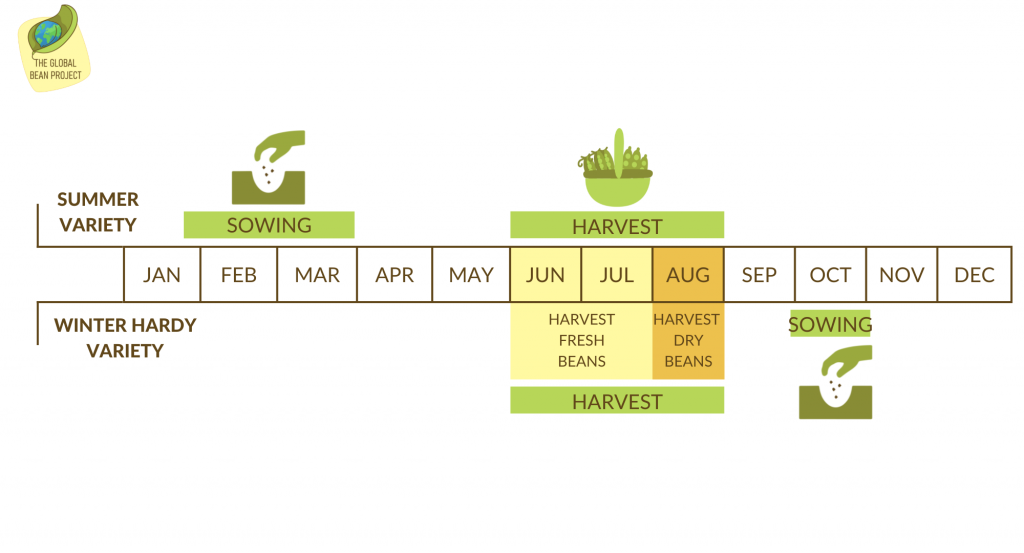
Have a look at our cultivation sheet for fava beans and discover how easy the cultivation of fava beans is and many tips & tricks!
Look for local varieties in the catalogs of seed providers (the list is collaborative, please expand it by adding your favorite legume seed sources).
